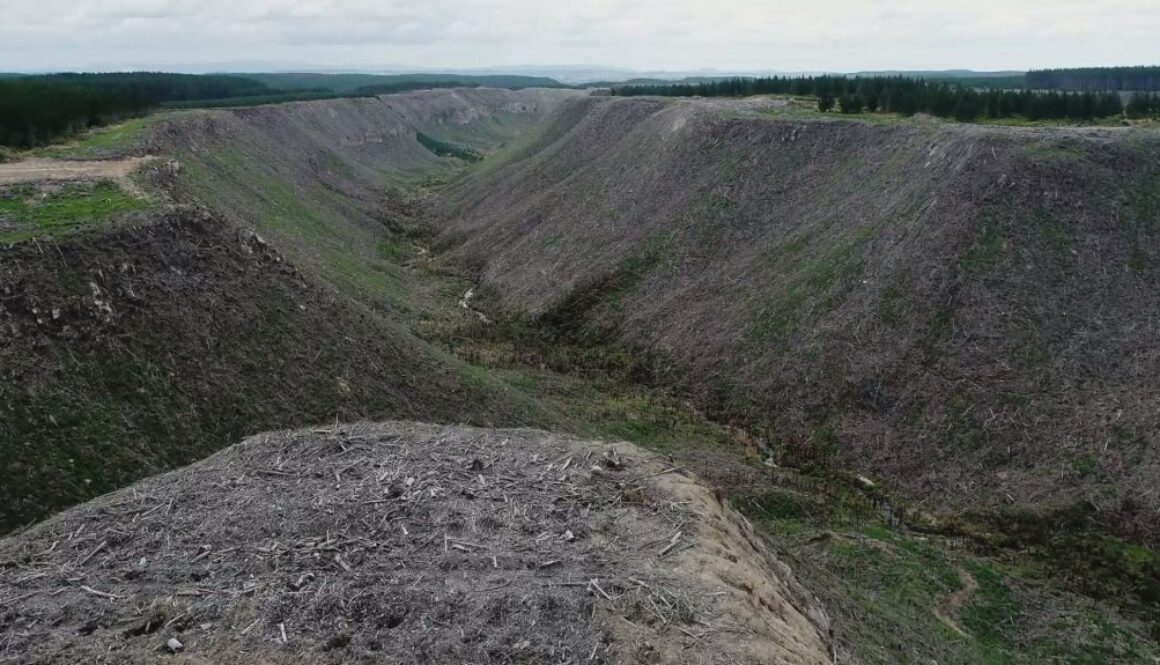Top image: PureAdvantage
Reposted from Pure Advantage:
There is a new risk to you – the taxpayer – from the government’s recent decision to back off from excluding exotic species like pine from the permanent forest category of the emissions trading scheme.
From 1 January 2023 forest owners can lock up pine plantations, as ‘permanent forests’. In return, while the trees are growing, owners will be able to earn credits which they can sell to polluting industries to offset emissions. When the trees stop growing those revenue streams finish. This means pine plantations will increasingly be planted with no intent to harvest. A new exotic carbon farming industry will rapidly spread across the land–an industry we can think of as carbon mining.
Just like its traditional format, carbon mining is an extractive industry. Once there is no resource left–in this case, when the pine trees stop growing–the mine is of no value and becomes a liability.
In addition to the long-term costs of managing a plantation in its ‘permanent’ state, any deforestation requires the owners to buy emission units. There is a very real risk of a ticking time bomb with the price of emissions units increasing significantly over time.
Pinus radiata is an introduced species, unlike native forests with diversity and climate resilience. With increasing impacts from climate change, pine plantations present heightened risks.
They burn well, creating risks for neighbours and releasing CO2 back into the atmosphere. The recent wildfires in the Landes forest, the largest planted forest in western Europe, saw thousands of hectares burnt and thousands of people evacuated.
These are monocultures, at a time when a biodiversity crisis and collapsing ecosystems are posing risks to human survival. In NZ, they are also monoclones, with a lack of genetic diversity that makes them very vulnerable to climate change. In many parts of the world, pests and diseases are wiping out huge areas of pine plantations.
Pinus radiata is also a relatively short-lived species, especially in New Zealand due to intensive genetic modification. Compared with native forests, pine plantations sequester carbon for a relatively brief period. As the trees age and die, the risks of fire and disease increase, along with the risks that the plantations will be abandoned.
Promises may be made that instead, pine plantations will be converted to native forests. This is a very difficult and high risk process, however. Take for example Maungataniwha pine plantation.
It can take at least a decade to clear logged land of wilding pines and to get it to the point where it can be described as fully regenerated – supposing you are lucky enough to have native seeds in the soil already. It’s costing the Forest Lifeforce Restoration Trust around $70,000 per year, plus a lot of volunteer hours.
If land owners are not inclined or able to meet their obligations, these sorts of projects will be extremely challenging. Government and communities will pick up the costs of remediation.
Millions more would be needed to pay for the purchase of emission units to offset the felled pine, and it is hard to see where this money would come from.
As designed, the ETS is encouraging the misallocation of capital towards carbon mining, with the potential for damaging long-term socio-economic and biodiversity outcomes.
Ultimately, taxpayers and society will be left with the bill. The environment will suffer, biodiversity will be negatively impacted, resilience to climate change will be reduced and you, me, our children will be picking up the bill.
See also this website:

